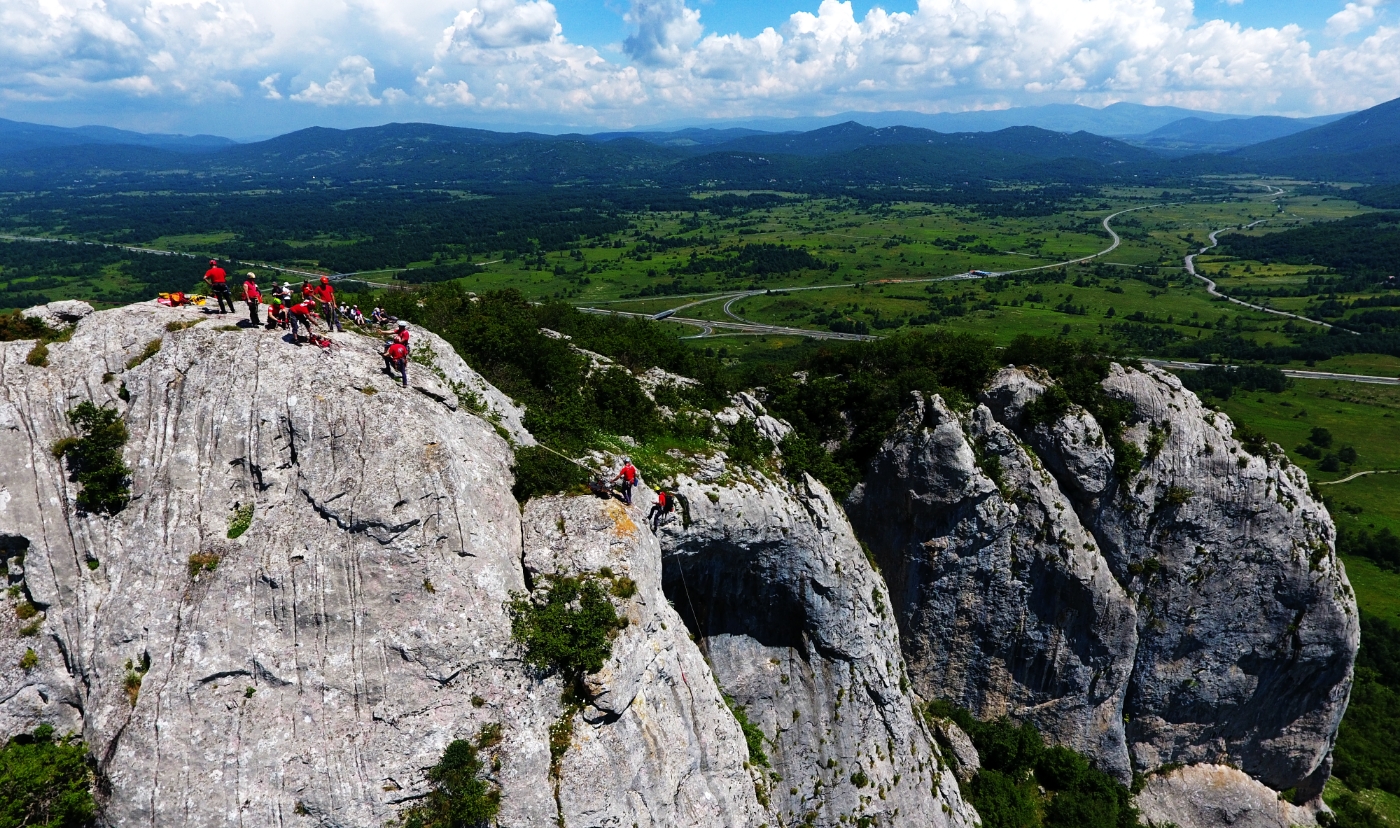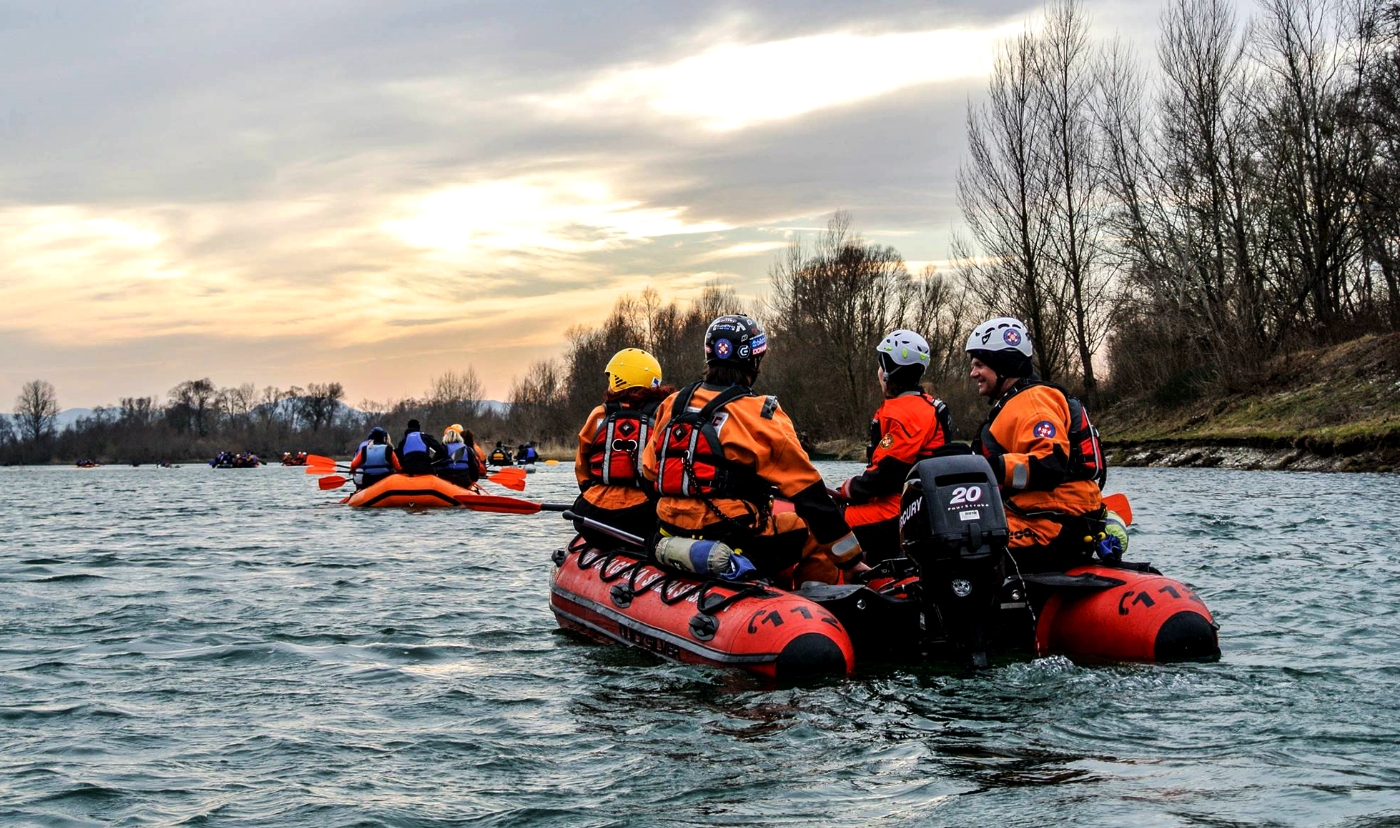


The purpose of the following section is to make the outdoor activities a pleasant experience for you. The guidelines are set out by the CMRS and are the result of many years of experience.
We hope that they will help you to enjoy outdoor activities in a safe manner.
If only one of these guidelines helps you to avoid an accident, this website has served its full purpose!
In order to act properly in the event of an accident, the first rule is to maintain composure, and to calm the others down.

The distress call in the mountains or on rock faces is made using light or sound signals. The distress call is repeated six times in the minute (every ten seconds). It is to be repeated after one minute of break in the same manner. The reply to such a signal is given with three successive indications per minute and likewise repeated after one minute of break. Calls and replies continue until clear connection is established.
The firing of a red flare is also a sign that assistance is required.
Moreover, if you wish to communicate with a helicopter in sight, raise both arms up and aside (forming the letter Y) to indicate “Yes” or “I need help”.
Mark the place of the accident with waving astrofoil (silver side). If location is shaded or during nightime night time use mobile or camera flashlight.
The safety guidelines define and regulate general and special measures and rules.

Pursuant to Article 13, paragraph 2 of the Croatian Mountain Rescue Service Act, and at the proposal of the CMRS, the National Protection and Rescue Directorate (i.e. the Civil Protection Directorate within the Ministry of the Interior as of January 1, 2019) adopted the Safety Guidelines on April 28, 2017. The safety guidelines define and regulate general and special measures and rules of conduct for persons participating in activities in the mountains and other inaccessible areas. The safety guidelines can be downloaded in the following link: LINK
High altitude mountains are the ones rising 2500m and higher above sea level.

Mountains rising 2500m and higher above sea level are considered high altitude mountains. That altitude is the limit above which temporary symptoms, or serious health issues, may occur. Safety risks in high altitude mountaineering should be taken seriously and prepared for.
The most important advice we can give is to choose an activity which suits your physical and mental capabilities.
Climbing is dangerous. You need to do everything you can to mitigate the effects of gravity and falling.

Research has shown that 60% of injuries can be prevented by responsible behavior.

Rules for the Conduct of Skiers and Snowboarders FIS has since many decades published guidelines to assist in the promotion of skiing and snowboarding, such as the rules for the conduct of skiers and snowboarders. These are to be used for guidance only and are subject to and do not replace the specific rules applicable to any given ski area, course, park or competition.
Ski touring offers great opportunities to discover nature, share experiences, take on responsibilities and keep fit. The following advice will help you deal with any danger you may have to face in the winter.
These ten points are based on the recommendations made by the CAA and have been completed by the SAC training and safety experts. However, they can’t replace training courses, which provide a solid base and help you expand your competences and improve your technique with qualified instructors.
(by
Ski touring is an endurance sport. The effort it demands, which is beneficial for the heart and circulation, requires you to be in good health and able to assess your abilities. Avoid being pushed by time and adopt a pace which is suited to all members of the group. Bear in mind that you will need to save energy for the descent.
Information about distance, height differences, the level of difficulty and the conditions can be found on maps, in guide books, online or by asking experts. The weather forecast is particularly important as storms, snow, wind and cold weather can greatly increase the risk of accidents. Make sure that the itinerary is adapted to the level of the group and always plan alternative ones. Take note of the emergency mountain rescue phone numbers of the country (REGA: 1414; European emergency number: 112).
Make sure your equipment is suitable for winter conditions and for your destination. If you’re headed for areas prone to avalanches, avalanche transceivers, spade and snow probe, first aid kit, bivouac sack and mobile phone constitute the standard emergency equipment which everyone should carry. An airbag rucksack increases the chances of survival. Check your equipment before every outing and emphasise the importance of this to all the other members of the group. For outings on glaciers, it is essential to have a harness and other specialized equipment.
Before setting out, get detailed information concerning the risk of avalanches. Check the avalanche report, paying particular attention to the danger level (1-5), and information about the type of danger (what is the main danger today?), exposure and altitude. Take note of the dangerous sections (what dangerous parts will I be confronted with?) and the weather evolution during the day.
It is very difficult to determine the risk of avalanches. Base your decision on strategic methods to estimate the risk and learn to recognise the warning signs (e.g. snowdrifts). Steer well clear of dangerous areas and turn back if in doubt. Bear in mind that avalanches can also occur in the forest.
To keep up your energy levels and stay concentrated, it is important to take breaks, to eat and to drink. Hot, isotonic drinks are ideal for quenching your thirst and warming you up, especially in the winter. Always use your sense of direction to find where you are and check it by using a map, a compass, an altimeter or a GPS. It is essential to have this equipment on you for orientation. Other skiers’ tracks provide no guarantee so be wary of them!
Keeping a certain distance between everyone helps spare the snow cover and reduces the danger if there is an avalanche. In addition, kick turns on steep slopes are easier when there is a distance of 10 meters between everyone. During the descent, the distance should be of 30 meters. On steep slopes, skiers should go down one after the other and each one should stay on a defined line.
Falls on the descent are the most frequent cause of ski touring accidents. They put extra stress on the snow cover. A good skiing technique and an appropriate speed (depending on your ability) help reduce the risk. Wearing a helmet protects your head. NB Be particularly careful if the snow is frozen and if there are stones or rocks.
There are fewer risks with small groups (up to 6 people). Dangerous situations can be avoided by communicating clearly with the other participants and respecting one another. Stay in a group and share your impressions. Every member of the group must know where you’re going and what route they are taking. Make sure a family member knows your destination, what itinerary you have planned and when you expect to be back. If you’ve planned an outing on your own, beware – minor incidents can easily turn into serious emergencies.
High mountain areas are the perfect place to discover the uniqueness of nature. Appreciate this freedom and respect the fragile environment and the areas where animals take refuge. Stay on the official paths and avoid reforestation areas.
Caving is beautiful but potentially dangerous activity that can lead to accidents. We strongly advice completing certified caving courses to gain knowledge and confidence before engaging in caving.

It is crucial that everyone be aware of the dangers that can arise during water activities and more importantly how to prevent those potential hazards from becoming a reality.

The CMRS has also teams trained for rescue operations in speleological and underwater sites. Therefore, in case of an emergency in caves, contact the CMRS imemdiately by dialing the 112 emergency number.

The safety tips listed in this text are intended for all active mountain bikers, regardless of the branch of mountain biking they are engaged in or the level of commitment they invest in this sport.

Despite the many subjective and objective dangers that are an integral part of this sport, with proper education and adoption of certain rules, many of them can be reduced. In this way, you contribute to your own safety, but also to the safety of the whole group.
With a higher level of awareness of all possible accident scenarios and the correct response with the necessary equipment and knowledge, it is possible to take care of the injured person and prevent further injuries until the arrival of emergency services. In the best case scenario, you will take care of the casualty to continue driving.
inform the members of the group if you have a disease and / or are taking the necessary medication and make sure that in that case your medication is in an accessible and familiar place
GENERAL:
